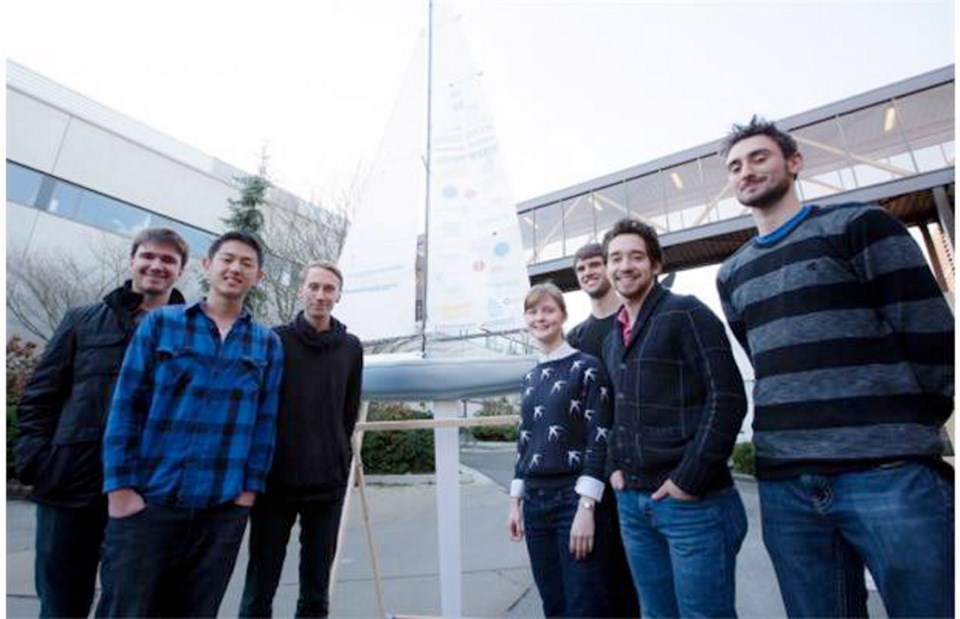A team of engineering and computer science students at the University of B.C. hope the robotic sailboat they plan to launch off the coast of Newfoundland this summer will be the first to cross the Atlantic Ocean completely on its own.
If successful, the as-yet-unnamed sailbot would be the first to complete a trans-Atlantic sailbot race first held in 2010.
Equipped with the latest in marine technology, from satellite navigation to thermal imaging, the 5.5-metre-long sailboat will make the more than 2,500-kilometre trek completely autonomously.
But as it sails, it will leave a digital trail online through a website so viewers around the world will be able to follow its progress as its dodges icebergs and storms in a race that starts 400 kilometres off the coast of Newfoundland and ends at Dingle, an island off the coast of Ireland.
“Ideally, we will not hit anything,” said Josh Andrews, who heads up the software group that is part of the 66-person UBC Sailbot team.
Other boats, all smaller than the one the UBC team is building, have run into various problems — literally, in the case of ones that have come to an untimely end in collisions.
“Usually they just get lost at sea,” Andrews said of race contenders. “There has been a couple of scenarios where the boats have run into islands or they’ve been picked up by other boats.
“But they’ve also usually been quite a bit smaller than our boat, actually even smaller than our previous boats.
The newest boat is the third in a series that started with two-metre Thunderbird 2012, the first sailbot created by the team. Its successor, the Thunderbird 2013, is the same size but with it Andrews said the team was able to not only sail from point A to point B but to also perfect the wind and GPS readings.
The UBC sailbots have won the International Robotic Sailing Regatta for three years running, first with the Thunderbird 2012 and then with the Thunderbird 2013, winning out against competition that included the U.S. navy.
But the international regatta, which is an eight- to 12-kilometre race, is child’s play compared to the challenge ahead.
The boat not only has to navigate across the ocean, it must do so totally under power provided by the Kevlar reinforced sails. The boat can sail at a speed of 10 knots and if all goes as planned the trip will take about 14 days, but it must rely on wind speed and direction, and plan its route accordingly based on updated weather information.
To avoid collisions, the sailbot will rely on sophisticated thermal imaging that provides a heat map of the surroundings, up to 500 metres away (Radar consumes too much power for the bank of solar-powered batteries that will keep the electronics running). Sailbot also equipped to monitor Automatic Identification System signals that track and identify ships and other vessels.
“One of the biggest worries is weather — hitting really bad weather and having damage to the boat and also hitting obstacles like icebergs and boats and other things,” said Andrews. “It’s very difficult to actually cross the Atlantic Ocean and even more difficult to do it without anybody on board. … So if anything goes wrong the boat has to figure out how to solve that on its own.”
The UBC team, which is looking for sponsors to help with the $60,000 cost of their project, will be showing off its sailboat technology at the 91ԭ�� Boat Show that starts Wednesday.



